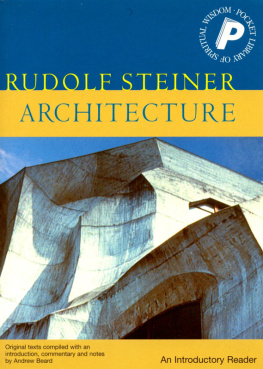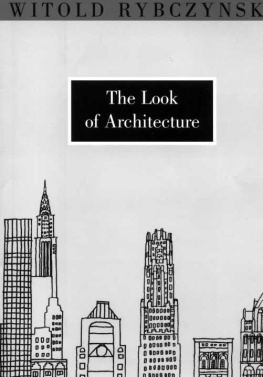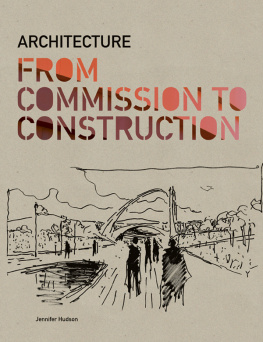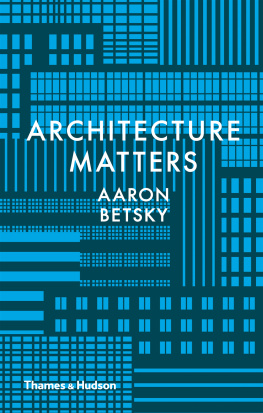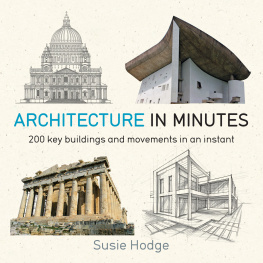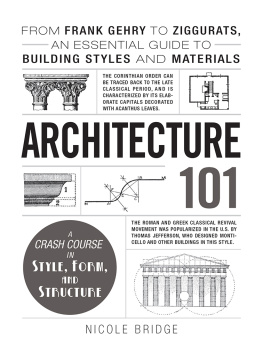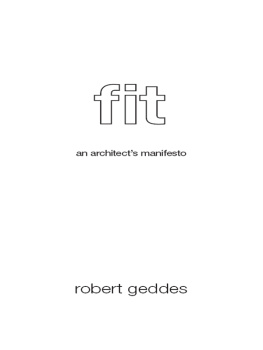The Architecture of Change
The Architecture of Change
Building a Better World
Edited by JERILOU HAMMETT
and MAGGIE WRIGLEY

2013 by Jerilou Hammett and Maggie Wrigley
All rights reserved. Published 2013
Printed in the United States of America
18 17 16 15 14 13 1 2 3 4 5 6
The Library of Congress has cataloged the printed edition as follows:
The architecture of change : building a better world / edited by Jerilou Hammett and Maggie Wrigley.
pages cm
ISBN 978-0-8263-5385-6 (cloth : alk. paper)
ISBN 978-0-8263-5386-3 (electronic)
1. Architecture and societyCase studies. 2. Social changeCase studies.
I. Hammett, Jerilou, editor of compilation. II. Wrigley, Maggie, 1958, editor of compilation. III. Designer/builder.
NA2543.S6A6325 2013
720.103dc23
2013003011
Cover photo: Painted umbrellas on the fire escape of Umbrella House, a former squatters building on Avenue C in New Yorks East Village. For years residents have created the display to celebrate the survival of their building, which they now own as low-income housing. (Photo by Maggie Wrigley)

(Photo by Byron Baker, courtesy of BASIC Initiative)
THIS BOOK IS DEDICATED TO KINGSLEY HAMMETT (19442008), TO HIS LIFE AND HIS WORK.
Dearest King,
I must write the dedication to your book, the one Maggie and I and Peter have been putting together, the one you first thought about doing with meThe Architecture of Change.
How, my love, do I tell them all about your uniqueness, your beauty, the incredible journalist you were. How do I tell them how much you cared that the stories you wrote did something good for those you wrote about and those who read them. How do I tell them how you knew every story was a human storynot facts, not reports, but about the human beings affected by whatever was happening. How do I tell them about the love you carried in your heart as you wrote those stories, how you loved people, and words, and the act of putting the lives of others down on paper so that they would come alive.
Because they did come alivethe people, your words, your stories. And especially your values and your belief that a better world was possible. You had so much faith in what people could do for each other, what they could create and build, how they could transform misery into hope and put their talents together to improve lives. You wrote from your heart and from the pureness and simplicity that was you. You truly saw all people as equal and you treated them that way. What a gift that is. You envied me for my deep convictions but I envy you for your ability to put yours into your relationships with other people. The respect and kindness you showed them was the same spirit you brought to your stories. And those stories touched so many hearts.
You were a unique one, King Hammett, a jewel, a treasure. Thanks for all youve left us with, for all you were, for your example, for your love and kindness, for your talent and wisdom, for your care and respect, for the light of your spirit, for your innocence. Thank you for touching our lives.
Jerilou Hammett
CONTENTS
anti-gentrification
fair food
schools that work
saving community
housing options
reconciliation
accessibility
architectural education
community organizing
transformation
educational empowerment
community building
activist planning
economic empowerment
housing options
resistance
critical urbanism
place matters
hunger
empowerment through art
shelter
urban reclamation
community revitalization
cooperative housing
public housing
radical education
cultural landscape
urban history
aging in place
community building
housing options
the human landscape
conscious aging
universal design
interior design
conscious aging
The Architecture of Change: Building a Better World
is a compilation of articles from fifteen years of
DESIGNER/builder magazine, whose objective
was to change how we see the world.
MICHAEL SORKIN
FOREWORD
WHAT IS THE MEANING OF A CONSEQUENTIAL ACT? FOR Jerilou and Kingsley Hammett, the decision to found DESIGNER/builder was motivated, clear and simple, by a sense of conscience and everything followed from that. Surveying the field of architectural media in the United States, they found it wanting, myopic, distorted by a trivializing parochialism and by a fundamental failure of empathy, of politics. What they did was to start a magazine that loved the possibilities within the built environment not simply to create spaces of comfort and beauty or to goad arcane style-wars but to repair the planet and to be a tool for social justice. And, they recognized from the get-go that this project was plural, not simply in its means and meanings but in the multiplicity of individuals and publics it necessarily engaged and served.
And what a service DESIGNER/builder has performed! Part of a long and noble tradition of little magazines, founded outside the routines of major media production, publicity, and profit, it has taken on a remarkably empowering mission. The title itself speaks not to a passive, aestheticized approach but to something that sounds very much like part of the DIY ethos that links it to other authentically popular magazines, and especially to those with an idea about service, about liberation. This cant be stressed enough, the conviction that the environment in all its physical and social ramifications is something that should and can be subject to democratic control and change and that individuals of all stripes are not simply entitled to create the future but have the fundamental competence to do so. Of course, DESIGNER/builder had ambitions beyond the kind of home-building and hobbyist magazines with which its title invites comparison but it crucially shares their desire to naturalize access to the tools to take the world in hand and change it, repair it, improve it, share it.
This fight was also for an identity for architecture beyond celebrity, so far beyond this banal view that one read issue after issue of the magazine and thought with increasing joy that our architecture really could be something altogether different than what the conventional apparatus of dissemination and publicity presented. Look at the mix of subjects that kept turning up: public housing, racism, health care, community organizing, adaptive re-use, global warming, squatting, property rights, corporate control, gentrification, a critique of green-wash, homelessness, the real character of natural disasters, pedestrianism, Pyongyang, the settlements in the West Bank, big boxes and shopping malls, and, always, the stories of people and organizations at the forefront of the struggles for environmental justice at every scale and every kind of place. This especially: over the years,
Next page

